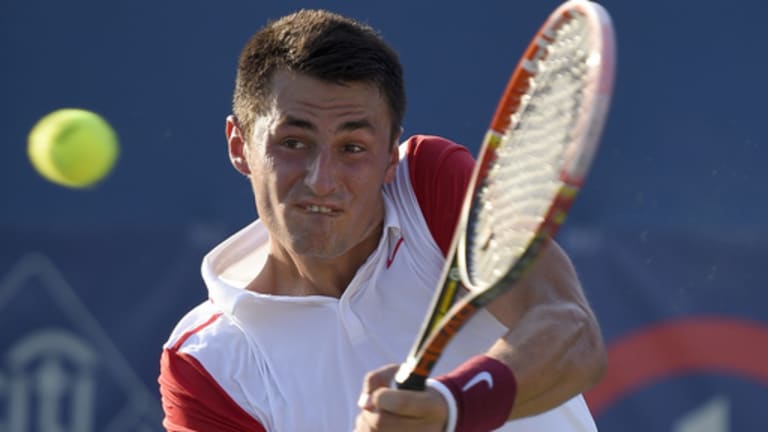Tennis in the U.S. experienced its clash of the generations in the 1970s, when Jimmy Connors and John McEnroe, the Open era’s original ugly Americans, took over from those upstanding citizens of the amateur days, Stan Smith and Arthur Ashe. But that shift feels logical, and tame, when you consider how far Australian tennis has come—or gone—in the last 40 years. Rod Laver and Ken Rosewall, did you ever see Bernard Tomic or Nick Kyrgios in your future?
Those two young players, along with Thanasi Kokkinakis, are sometimes referred to as “the tyros” in the Aussie press, and the word seems appropriate. It may technically mean “beginner,” but with its mix of “tyrant” and “pyro,” it sounds like something or someone who’s just a little difficult to control. So far Tomic, 22, and Kyrgios, 20, have fit that bill, and they’ve spent the last month stirring things to a boil on tour.
On Wednesday, Tomic recorded one of the biggest wins of his career when he beat the U.S. Open champion Marin Cilic in Montreal, 6-3, 6-4. This was Tomic’s sixth win in his last seven matches, a run of success that, perhaps not coincidentally, comes just after he had appeared to reach a career nadir. Last month at Wimbledon, Tomic let loose with a press-conference tirade aimed at Australia’s tennis federation and its Davis Cup captain, Pat Rafter, and was subsequently suspended from the team. Instead of playing in the country’s quarterfinal tie in Kazakhstan, Tomic instead went to Miami Beach...where he was promptly arrested for refusing to turn the music down in his hotel room.
What did Tomic do next? He flew to Bogota and defended his title there. It was just the second time in four months that he had reached the quarterfinals or better at any tournament. Now he has a win over Cilic and will face Jo-Wilfried Tsonga in the round of a 16 at a Masters event. Tomic’s ranking, despite the chaos surrounding him off court, and a series of brutally close early-round losses this spring, is back up to No. 26.
